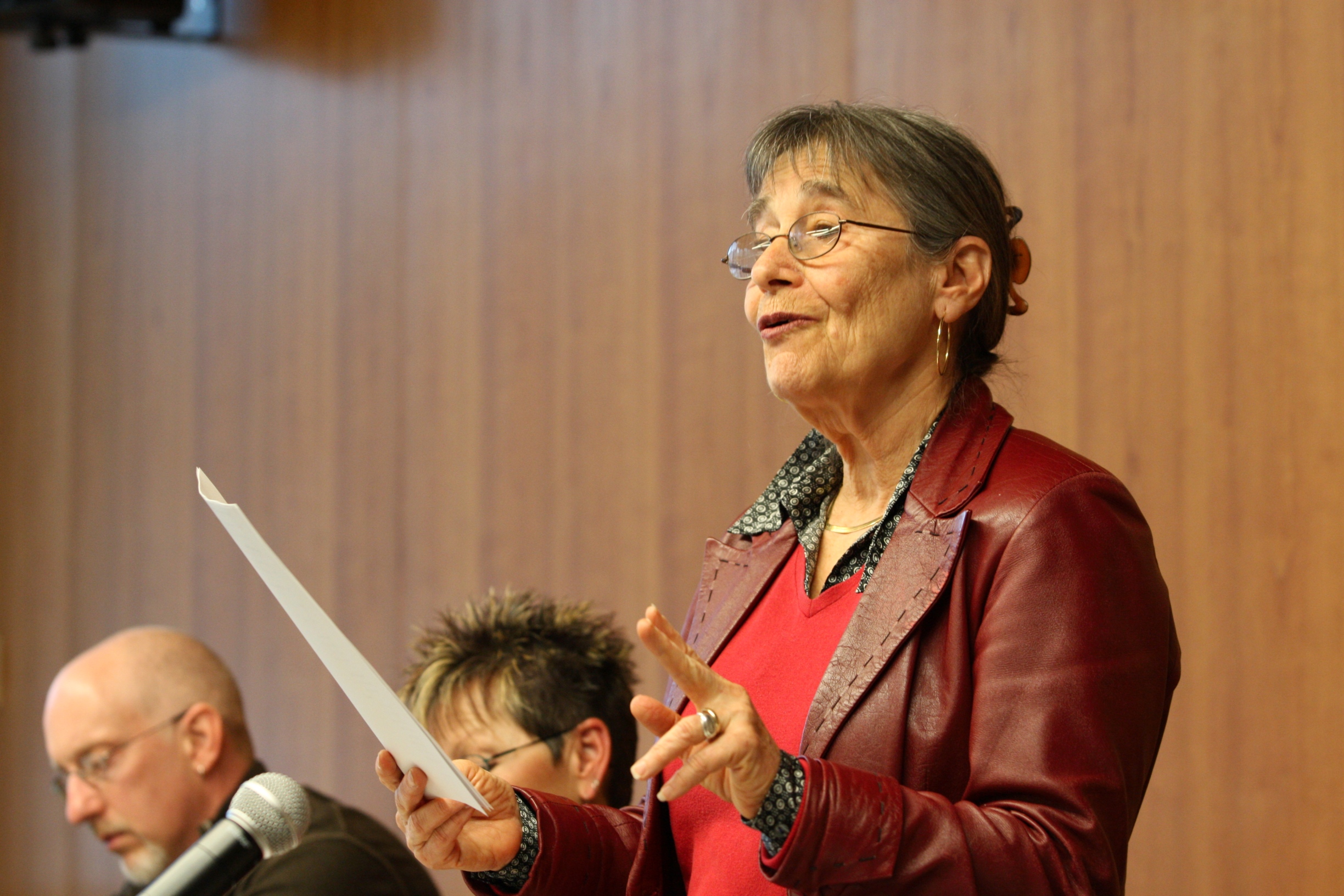Admirers call Swenson’s poetry spiritual, playful
Spirituality isn’t normally associated with fun and playfulness, but in May Swenson’s poetry it is unavoidable, said poet and critic Alicia Ostriker in front of at least 100 audience members at a discussion panel in the Merrill-Cazier Library Thursday.
Professors Chris Cokinos, Star Coulbrooke and Maria Melendez as well as Ostriker took the religion panel discussion.
The panel discussion focused on Mary Swenson’s works, a Logan native poet and playwright who was well-known for her adventurous word play and erotic exuberance in her poetry.
Swenson received her bachelor’s degree from Utah State in 1934 and worked as a reporter for a year before moving to New York City where she was a writer for the majority of her career.
In Swenson’s poetry, playfulness and spiritually are intertwined topics in numerous works which makes her poetry a unique style, Ostriker said.
Swenson, who died in 1989, was described as an unconventional poet, Ostriker said, often writing about becoming interchangeable with God, the Beloved.
“In all traditions, the mystic desires to be one with the divine,” Ostriker said. “Swenson’s poetry was her spiritual practice. I would say the same for myself.”
Ostriker said there are many poets who say poetry is their spiritual practice.
“I speak to poets who say, ‘Sometimes I go to church and sometimes I pray, but in truth, my truest spiritual practice is where I ask for and am given what feels sacred,'” she said.
Swenson came from a rural Mormon background and was eldest of 10 children. She wrote “Bison Crossing Near Mt. Rushmore,” a poem that Coulbrooke compared from a herd of bison to the structure and culture of The Church of Jesus Christ of Latter-day Saints.
The heavy-headed bison represents church leaders such as the bishopric, the herd of cars stopping to gaze at the massive bison represents the church congregation and the lean, strong female bison represented the role of the Mormon mother, strong, efficient and nurturing.
Coulbrooke said she found religious connotations watching bison crossing Mt. Rushmore and a deep connection with the poem in a religious sense.
“Even if you’ve been away from a certain religion for many years, it is still is a part of you like the waves of the ocean because waves are eternally with the ocean,” Coulbrooke said.
In Swenson’s poetry, it is difficult sometimes to distinguish seriousness and playfulness, but nonetheless, all her works convey spiritual meaning, Ostriker said.
“I don’t think anyone can hear a Swenson poem without feeling something you would have to call sacred and holy in the writing,” Ostriker said.
Swenson’s poetry is enriched with metaphorical language as in her poem “To Arise in The Other’s Body” where readers are given an anxious yet flirtatious vibe in the poem’s message.
“(Swenson) keeps you at a rhythm that keeps you guessing,” she said. “Although the poem seems to express anxiety, isn’t it also fun? It is a fun, playful poem.”
In her poem, “Seasonal,” Swenson discussed how life experiences here on earth can never be obtained in the spirit world in the LDS religion.
Ostriker recited from Swenson’s poem “Seasonal,” “They can never experience pleasure the way flesh can, the body making love, the body nursing a child, the body fighting or playing basketball, even when it sickens, nursing its lesions, it struggles to stay, it clings to its form, everything else is theology and folly. “
Swenson was never afraid of sounding casual and the majority of her works were topics on love, religion and spirituality, Ostriker said.
“I think the pressure is on women to be taken seriously and firm but (Swenson) is very playful all the time. Her childhood sense of herself has come out in her works.”
–candice.sandness@aggiemail.usu.edu

